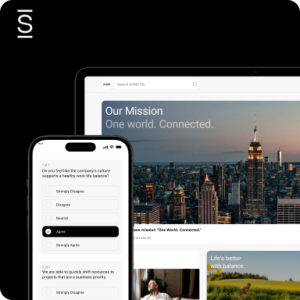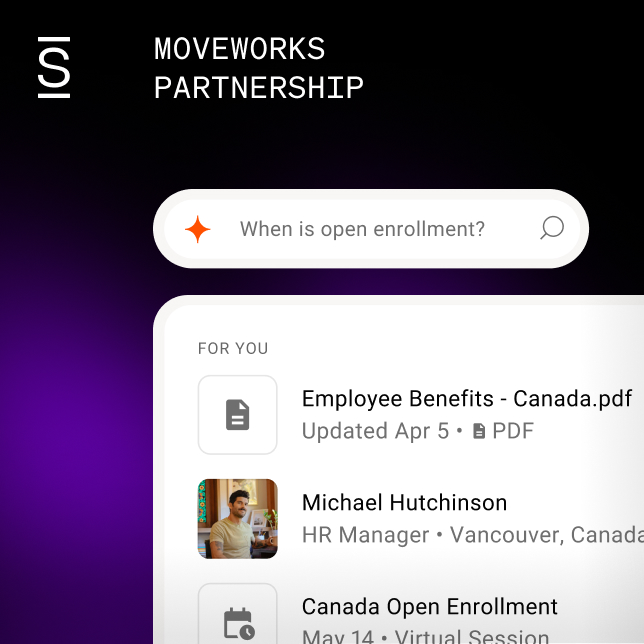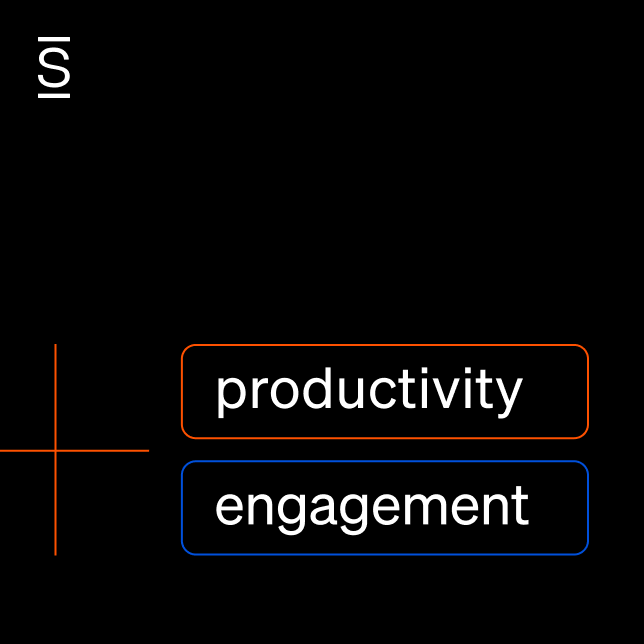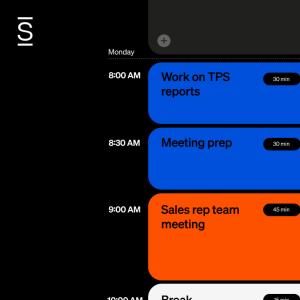The pandemic gave people time and space to think about life and work like never before, and work-life balance and health and well-being became paramount to survival. These days, well-being and career go hand in hand, and many prospective employees will look to a company’s wellness program before signing up. These programs have quickly become critical components in a company’s success. Let’s explore.
In the early days of 2020, the world stopped in its tracks as the COVID-19 pandemic took hold, forcing a global shutdown. Captains of industry, kings, queens, and presidents, along with everyone else, had to stop what they were doing and relinquish control to a disease that nobody had ever heard of.
Remember how, disbelieving, we were forced to take a step back and let go, and how many of us were compelled to re-evaluate career trajectories?
Nature returned to our cities and shores. From around the world, we marveled at stories of antelope wandering downtown, orcas frolicking where they had never been seen before, shy, rare birds appearing on urban feeding tables, and dolphins returning to Venice.
Oddly, amid overwhelming uncertainty and, in millions of cases, tragedy too, when civilization seemed, for a time, to be held together tenuously by delivery services, we glimpsed a perfect world. Looking back now, from where we’ve arrived in 2023, it’s clear that the world and its workplaces have changed forever.
Given that working life significantly impacts general happiness, let’s have a closer look at ideas around a successful employee wellness program.
What is an employee wellness program?
An employee wellness program is an enterprise within a company structured to improve health and promote all employees’ total well-being to thrive. Broadly speaking, such a program covers physical and mental health and provides channels for distributing and receiving information about employee happiness and workplace satisfaction. A well-designed program takes a holistic approach, supporting employees as they navigate the demands and challenges of everyday life at work and elsewhere.
The improvement and maintenance of good health within a comprehensive healthy lifestyle benefits the employee, the entire company, and beyond. Employee wellness programs are increasingly popular and play a significant role in employee experience, recruitment and retention.
Benefits of employee wellness programs
- Health and safety go hand in hand. A physically and mentally healthy employee can make the right judgment call to avoid accidents or injury in the workplace.
- Mentally and physically healthy workers have less reason to be absent from work. Full complement in the workplace means higher productivity.
- Well-being positively impacts employee engagement and retention because an engaged employee tends not to want to move on.
- During the recruiting process, an appealing wellness program will help attract and retain top talent in a competitive market.
- Employees’ sense of well-being impacts work colleagues, and this, in turn, positively affects customers.
- A good employee wellness program reduces stress and, as a result, reduces the chance of overwhelm and burnout.
- Companies in which well-being is prioritized tend to benefit from an enhanced reputation, from both employee and customer points of view.
- Better retention, fewer grievances, less absenteeism, higher morale, engagement, and commitment lead to higher productivity and a healthy bottom line for the company.
- Employee well-being is vital to a company’s productivity and success. If employees thrive in healthy company culture, the company thrives too. Employees who are not thriving can become vulnerable and pose a risk to the company.
Ideas and examples for employee wellness programs
On-site fitness classes
Employees can be provided with access to on-site fitness classes, such as yoga, Pilates, or Zumba, during lunch breaks or before or after work. This allows employees to easily incorporate physical activity into their daily routines. Finish Line, a USA fitness clothing retailer, offers on-site gyms for employees at many of their corporate and warehouse locations.
Health screenings
Companies can offer health screenings to employees, such as blood pressure and cholesterol tests, to help employees identify potential health risks and prevent chronic illnesses, reduce healthcare costs, and improve employee engagement and loyalty. Additionally, it can help employers create a culture of health and wellness in the workplace, leading to a healthier, more productive workforce.
Financial wellness programs
Given that economic issues significantly impact mental health, companies can provide resources and classes to help employees better manage their finances, such as budgeting workshops or financial counseling. USA supermarket chain, Wegmans, offers a robust employee assistance program that includes planning support for dependent and elder care costs, plus long-term and short-term financial planning.
Mental health resources
Employees can be offered mental health resources, such as counseling services or employee assistance programs; these resources are important because they can help employees address and manage mental health issues that may affect their work performance and overall well-being. By offering access to mental health resources, employers can help reduce the stigma around mental health and create a more supportive and productive work environment.
Well-being challenges
Companies can create challenges in which employees can participate, such as step challenges or healthy eating challenges. This is a fun way to encourage people to make healthier choices and build social connections with co-workers.
Employee discounts
Discounts can be arranged for gym memberships, healthy foods, or other well-being-related products or services. Offering this can encourage employees to adopt healthy lifestyle behaviors, and can also help reduce healthcare costs, improve productivity, and promote a culture of wellness in the workplace.
Flexible work
Flexible work options, such as remote work, flexible hours, and unlimited vacation days, promote a better work-life balance for employees. Defense contractor and cybersecurity company Raytheon introduced a flexible working schedule to help employees attain a healthy work-life balance. They developed a flexible working schedule, including a modified workweek, allowing employees to work the days and hours that best fit their schedules.
Employee activities
Employee engagement activities such as team-building, picnics, and social events can be organized to foster a sense of community and to belong among employees. IT giant Cisco gives each team member a fun fund where funds are allocated for parties and celebrating successes and positive milestones.
Interest groups
Various employee interest groups focussing on common interests can foster social connections, for example, a wine-tasting group, book club, or art appreciation gathering.
Parent support groups
Parent counseling and group support can be of significant value to working parents. Etsy, a well-known online marketplace, has a parent support program offering coaching, counseling, and other help around childcare and child-raising.
Steps to implement a successful employee wellness program
The implementation of an employee wellness program can be complex, but with careful planning and roll-out, it has the potential to be successful. With this in mind, be aware that the most effective program for your company enables employees to thrive in and beyond the workplace and encourages them to be the best possible version of themselves.
Critical steps for implementing a successful employee wellness program are:
- Assess needs
Assess the needs of employees using surveys, questionnaires, and interviews to determine their current health and wellness habits and their interest in participating in a wellness program.
- Design a plan
This should address your employees’ specific needs and interests, including health screenings, fitness classes, nutrition education, and others.
- Set goals
Ensure that goals and objectives for the program are set and that they are measurable and achievable.
- Choose a committee
A committee or person to administrate the program is needed to manage it, promote it to employees, and provide support and resources.
- Technology
Technology can assist with the introduction and management of the program, plus employee engagement. Depending on the size and scope of your program, there are a range of intranet options to assist.
- Set a budget
This helps determine various components of the program, including incentives you can offer your employees.
- Give employees options
Offering options that appeal to all employees is a route to maximized engagement and participation in the program.
- Incentives
Provide incentives to participate in the program, such as discounts on gym memberships or healthy food options.
- Regularly evaluate
Assess the program continuously and adjust as required to stay focussed on goals and ensure the program addresses the needs of employees.
- Get feedback
Improve the program by creating opportunities for employees to provide constructive feedback about specific initiatives or the program’s overall structure.
- Communicate the benefits
Inform employees about the program and its benefits with regular newsletters, employee meetings, or other methods.
- Promote
Continuously promote the program to ensure employee engagement and participation.
Conclusion
A good employee wellness program is more than the outline of a healthy diet or checking that someone is ‘feeling okay.’ In addition to improving the quality of life of every employee, it must inspire a motivated, engaged, and productive workforce. This workforce must be in the best position possible, mentally and physically, to achieve success.
More and more, the attraction and retention of top talent depends on healthy company culture and the extent to which a solid employee well-being initiative upholds that. A good program will include all things necessary for an employee and enable HR professionals to appropriately monitor the program’s effectiveness.
People are at the heart of everything your company does. If they are healthy and happy, the company will thrive alongside them.
Don’t lose star performers to the competition because you lack an effective employee wellness program. Put people and their needs first and use an intranet to facilitate input and create quality results. Reach out for a demo to see how it’s done!





















